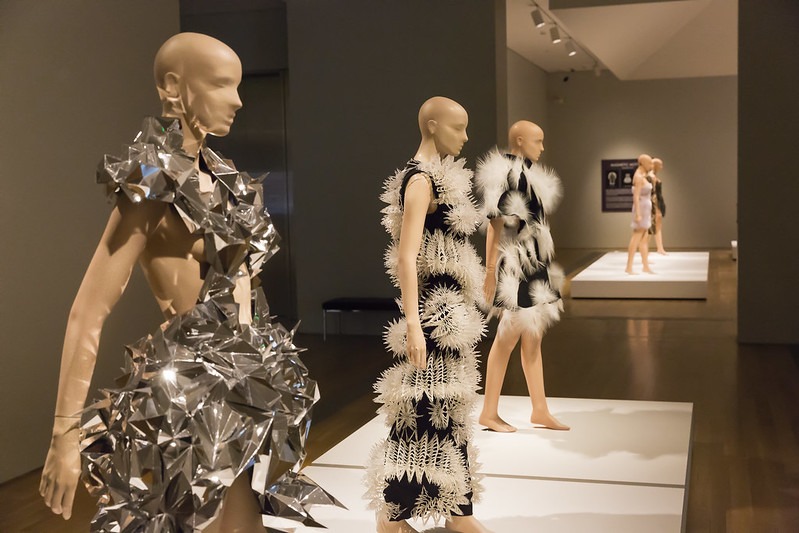My favourite designer: Iris Van Herpen
Iris Van Herpen is a Dutch fashion designer, structural genius and exhibitor of all things strange and stylish. Many of us will have seen Van Herpen’s work, probably multiple times, without realising. From Bjork’s Biophilia album cover, to costumes in Black Panther – Wakanda Forever, to a Rolls Royce collaboration — whichever industry your interests take you to — Van Herpen may have made an appearance. However, despite the big names she works with, the inspirations for her masterpieces are closer to home than you might expect.
Van Herpen’s work is inspired by the small, the common, and the usually unpopular
With the designer’s knowledge of movement rooted in her dance-background, Van Herpen adorns the human form in fluid, responsive artworks that seem to work symbiotically in a dance between the model and garment. There is an undeniable performance in the clothes, often with the option of added flourish by the wearers own accord. For example, see Gwendoline Christie at the Game of Thrones premiere, as the actress throws her arms in the air, Van Herpen’s dress frames her with a pair of fiery wings, in perfect keeping with the themes of the series. Similarly, for Beyonce’s Amsterdam performance on her Renaissance Tour, as she wore Van Herpen, the breeze picked up and lifted her pearlescent cape into the air for a truly ethereal moment. Future art students will be confused to see Beyonce, rather than The Conversion of Saint Paul, as they research ‘Renaissance angels’.
Despite the many impressive red carpet appearances, Van Herpen’s work is inspired by the small, the common, and the usually unpopular. I’m talking about bugs, critters, as well as, the earth and shells they inhabit. There are also hints of other easily missed natural nicknacks, such as leaves, roots, and feathers. As the average person turns their nose up at these tiny intruders who enter their homes, Van Herpen puts them onto the runway and into the spotlight, adorning our favourite celebrities in pieces inspired by the exoskeletons and wings of creepy-crawlies.
In this frenzy of innovation, it is no surprise that Iris Van Herpen’s studio resembles a love-child between a boutique and a science laboratory
As prime examples of the designer’s entomoid looks, turn to her Meta Morphism collection, and specifically Look 8 and Look 13. The weaving, skeletal structures convert insect-like silhouettes into haute-couture creations, as the models float down the runway in a cocktail of both stiff and soft materials. The use of delicate 3D printing allows the use of hollowed spaces and aids the nude illusion of the models, thus blurring the lines between the garment and wearer. The rigidity of the 3D printed elements also means that a look can take up as much space as the designer desires, unrestricted by the limitations of foldable fabrics.
Van Herpen’s work relies on technologies from beyond the traditional seamstress’ den
In this frenzy of innovation, it is no surprise that Iris Van Herpen’s studio resembles a love-child between a boutique and a science laboratory. Look to the Process films for each collection to witness the rush of science and stitching. Let this notion also encourage those who feel too far removed from the fashion scene to dip their toe into it; there is space for the mathematicians, the chemists, the biologists. Van Herpen’s work relies on technologies from beyond the traditional seamstress’ den.
The lesson I hope to pass forward from Iris Van Herpen’s work is that the inspiration for your creative endeavours could be lying just under your nose. As creatives, it is in our blood to reach to the nasty and pull art from it. But how about simply the small and irritating? Perhaps the next time I lurch away from a silverfish bug in my student accommodation, I’ll try to have a bit more Van Herpen in me: slow down and observe. That annoying spider in the corner of your room could just be the final puzzle piece of inspiration you need to bring your current project to life.

Comments